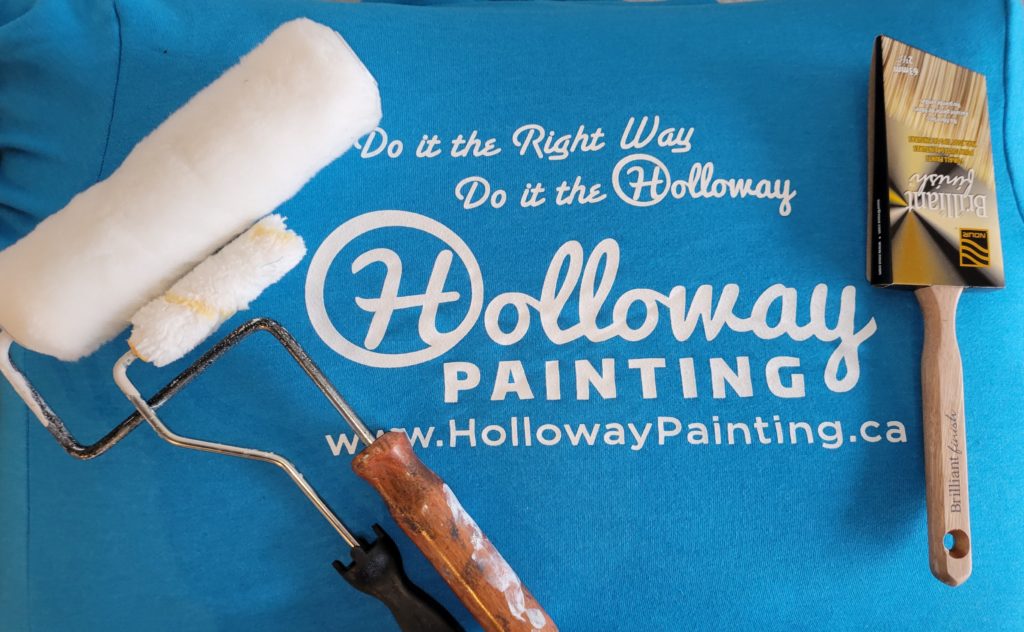Brush or roller for my painting project? How do I choose?
There are 2 things you want to consider when you are deciding if a brush or roller is right for your painting project.
- Firstly, you need to identify what type of surface you are painting for your project?
- Secondly, you need to be aware of what type of paint you are using?
Best brush for my painting project:
It is equally important to understand the difference between the types of bristles in a paintbrush and what they are best used for.
Two main types of bristle brushes:
- Polyester and Nylon blend -Polyester and Nylon blends are synthetic materials and are made to hold their shape and are better suited for high-quality waterborne latex or 100% acrylic paints.
- Natural bristles or sometimes known as China bristles are designed more specifically for oil-based paints, stains, or varnishes/clear coats. The thickness of these bristles is meant to control the hold of the oil-based coating.
Production Brushes are recommended for professional painters, They are fabulous for paint pick-up and release. These types of brushes help to deliver great results in less time. The brushes pick up and release as much as 25% more paint than any other brush on the market.
- High Production brushes are available in a nylon/polyester blend for waterborne latex or 100% acrylic coatings and in a white China/polyester blend for oil-based coatings.
- Nylon and Polyester Brushes are very durable and easy to clean. The white nylon tips are precisely flagged and tapered for a sharp cut-line. This is a more commonly used brush for a do-it-yourselfer.
Best roller for my painting project:
Choosing the right roller cover or sleeve is also very important. Using a roller will help to paint your walls, stucco, or any other flat surface with ease. Rollers are similar to brushes, they are also made up of different materials for better-finished results on your room walls.
Two main types of rollers:
- Nylon-Polyester blend is the most common. They are ideal for interior painting projects using waterborne latex or 100% acrylic paints.
- Natural fiber, lambswool, or a mohair sleeve are used for finer finishes such as trims, doors, or custom woodwork. These types of brushes are more commonly used with oil-based coatings or varnishes/clear coats.
First of all, you will need to choose the right “nap” or “thickness” of your roller cover. If you are painting textured surfaces like a ceiling or exterior stucco, you want to use a heavier nap sleeve. For smoother surfaces, such as walls, doors, or even Hardie board siding, you will use a lesser nap sleeve.
A quick guide on roller cover naps:
- 5mm-10mm: For very smooth surfaces like metal doors and plaster.
- 10mm-15mm: For smooth and semi-smooth surfaces like drywall.
- 15mm-20mm: For semi-rough surfaces like wood or a textured ceiling.
- 20mm-25mm: For rough surfaces like stucco or a heavily textured ceiling or concrete blocks.
Tips from the pros:
- Keeping your tools clean will significantly extend their life. We recommend reading the “clean up” directions on the back label of the paint that you are using to see what best dilutes and cleans the paintbrushes.
- For waterborne products, it’s best to use warm water and a little soap.
- For oil-based paints, it’s generally best to use mineral spirits or paint thinner.
- Using a wire brush when cleaning your paintbrushes is a fantastic way to reduce the cleaning time and provide the best results.
- Make sure to sculpt your clean and wet paintbrushes back to their original shape and let them air-dry overnight. This will make sure they are ready to use the next day!
In addition, it is much more of a cumbersome process to get dried paint out of paintbrushes.

